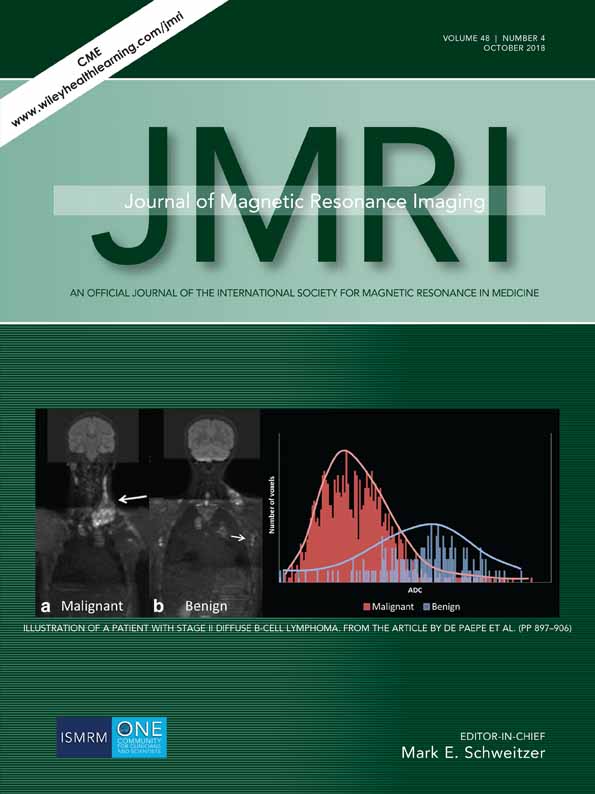Utility of volumetric contrast-enhanced and diffusion-weighted MRI in differentiating between common primary hypervascular liver tumors
Abstract
Background
Differentiating between hepatocellular carcinoma (HCC), focal nodular hyperplasia (FNH), and hepatocellular adenoma (HCA) is usually achievable by MRI. However, in some cases with atypical imaging findings accurate diagnosis may be difficult.
Purpose
To assess the diagnostic value of volumetric contrast-enhanced (CE) and volumetric diffusion-weighted imaging (DWI) in differentiating between HCC, FNH, and HCA.
Study Type
Retrospective.
Subjects
In all, 143 patients (206 lesions): 42 HCA (81 lesions), 51 FNH (65 lesions), and 50 HCC (60 lesions).
Field Strength/sequence
1.5T MRI, T1-T2WI, DWI.
Assessment
Patients underwent CE-MRI and DWI (b = 0, 750 mm2/s). Volumetric assessment of lesions' contrast enhancement and apparent diffusion coefficient (ADC) was performed with semiautomatic software after 3D image registration and segmentation by an observer and compared between three lesion groups. The diagnosis of lesions was based on histopathology, typical MRI findings, and/or follow-up.
Statistical Tests
Independent t-test was used to compare parameters between two groups, one-way analysis of variance (ANOVA) between three groups, and receiver operator characteristic curve (ROC) analysis to define under-curve area and optimal cutoff.
Results
Mean values (±standard deviation) for HCC, FNH, and HCA, respectively, were: 1) arterial enhancement (%), 40.5 ± 13.2, 88.6 ± 32.6, 69.6 ± 25.1; 2) venous enhancement (%) 72.4 ± 22.1, 95.2 ± 30.9, 80.7 ± 30.6; and 3) ADC (10−6 mm2/s) 1404.5 ± 168.1, 1413.4 ± 232.1, 1070.1 ± 232.1. ADC was the best differentiator of HCA from FNH (at 1211 × 10−6 mm2/s; sensitivity 80.4%, specificity 71.7%) and arterial enhancement was the best differentiator of HCC from both HCA (at 48%; sensitivity 80.0%, specificity 80.5%) and FNH (at 52%; sensitivity 85.7%, specificity 85.4%). A combination of arterial enhancement and ADC (at 50% and 1227 × 10−6 mm2/s) differentiated three types of tumors with high specificity (87.9%).
Data Conclusion
Volumetric CE-MRI and volumetric DWI can help to differentiate between HCC, FNH, and HCA.
Level of Evidence: 1
Technical Efficacy: Stage 2
J. Magn. Reson. Imaging 2018;48:1080–1090.
Conflict of Interest
There is no conflict of interest or industry support for this project. No funding was provided from Siemens for this particular project




